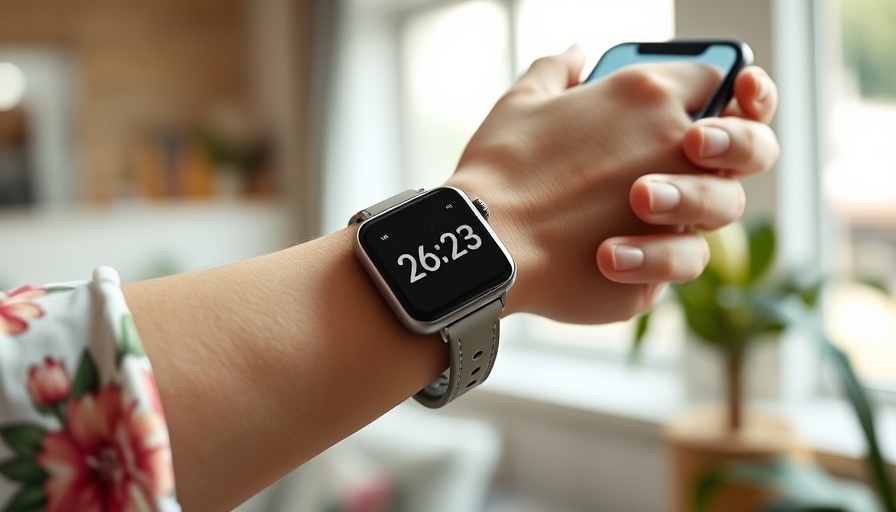
RFK Jr. Launches Wearables Campaign to Promote Health Awareness
In an exciting initiative, U.S. Health Secretary Robert F. Kennedy Jr. is set to encourage Americans, particularly those over 55 in Louisiana, to embrace wearable technology for improved health monitoring. This campaign, launched by the Department of Health and Human Services (HHS), aims to empower individuals to take control of their own health and well-being.
The Surge of Wearable Technology
Wearable technology, including fitness trackers and smartwatches, has gained immense popularity in recent years. Devices like Fitbits and Apple Watches not only track physical activity and heart rate but also provide valuable insights into sleep patterns and overall health. For older adults, incorporating these devices can serve as a significant step toward enhancing personal healthcare management.
Understanding the Value of Being Proactive
This campaign couldn't come at a better time. The CDC notes that health issues like obesity and chronic diseases are on the rise among older generations. By utilizing wearables, seniors can easily monitor their health metrics, encouraging a proactive approach rather than a reactive one. Like many Americans, many individuals in Louisiana are looking for effective means to stay healthy, and this campaign provides both the tools and the support needed.
Benefits for Seniors: Why Health Tracking Matters
The ability to rewind health habits can be lifesaving. For example, seniors who track their activity levels are more likely to stay active, reducing risks of heart disease and diabetes. Data collected by wearables can also be shared with healthcare providers, facilitating better-informed decisions about treatments and lifestyle changes.
Health Secretary Kennedy emphasized, "Wearables are a way people can take control over their own health." By leveraging technology, seniors can keep tabs on their health realities, encouraging bursts of motivation throughout their day.
Human Stories: Real Impact of Wearables
Many individuals, including those from Louisiana, have experienced life-changing transformations thanks to wearable tech. For instance, one senior named Janet shared that she was able to shed pounds and improve her energy levels after tracking her fitness goals with a simple smartwatch. Janet reports feeling more connected to her health than ever before.
This personal narrative underscores an important point: when health is actively monitored, it can lead to more engaging and fulfilling lives, especially in the later years when maintaining vitality becomes a priority.
Future Trends: Where Wearable Health Tech is Heading
As technology continues to advance, the capabilities of wearables are expected to expand. Future iterations may include features that monitor blood glucose levels or even detect signs of heart attacks. For residents in Louisiana concerned about healthcare options, keeping abreast of these developments is key to making informed health decisions.
Action Steps for Engaging with Wearables
So, how can you get started? Begin by researching different wearable technology options that fit comfortably and suit your lifestyle. Simple features to look for include basic fitness tracking, heart rate monitoring, and sleep tracking capabilities. Additionally, don’t hesitate to ask family members or health professionals for guidance.
Health is a lifelong journey, and integrating wearables into your daily routine can provide invaluable support along the way.
Call to Action: Embrace Your Health Journey Now
As Robert F. Kennedy Jr. draws attention to this vital health initiative, it’s an excellent opportunity for you, especially those over 55 in Louisiana, to consider how wearable technology could enhance your life. Start today by exploring options that align with your health goals— you have the power to take control of your well-being!
 Add Row
Add Row  Add
Add 



Write A Comment